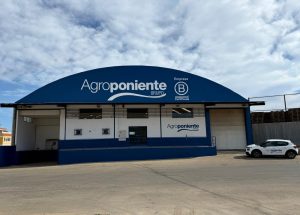The company has already launched four new iceberg lettuce varieties with intermediate resistance to Nr:1, providing comprehensive Bremia resistance (Bl: 29–41) and high resistance to Nr:0. Full commercial seed volumes are expected to be available by mid-2026, with sowing beginning in June.
Paul Huijs, product manager for iceberg lettuce in Europe, explained: “Nasonovia ribisnigri is notorious for causing significant damage to crops. It exists in two main biotypes: Nr:0 and Nr:1. The older Nr:0 biotype was previously controlled through genetic resistance, but the emergence of Nr:1 in 2007 significantly changed the landscape, as this new biotype could break through the resistance that had protected crops. Since then, both biotypes have been present in European fields.”
RELATED NEWS: Enza Zaden’s HREZ tomato: resistance driving the future
“The challenge with Nr:1 is its ability to overcome traditional resistance genes, despite being undetectable by the naked eye, making it difficult to identify and control. To address this, Enza Zaden launched an extensive breeding program, which included searching for wild lettuce plants capable of withstanding Nr:1. After years of classical breeding, marker-assisted selection, and thorough field trials, we succeeded in developing iceberg lettuce varieties that offer Intermediate Resistance (IR) to Nr:1.”
Sven Paauwe, sales manager for Leafy Benelux and the Nordics at Enza Zaden, added, “Nasonovia ribisnigri thrives in cooler climates, with optimal growth occurring between 20°C and 24°C. However, when temperatures rise above 28°C, aphid mortality increases, especially during the nymph and adult stages. At this point, reproduction stops, and fertility in winged forms drops drastically. Our varieties are advantageous because, unlike external conditions such as weather or crop stage, our built-in resistance begins working from within the plant.”


















